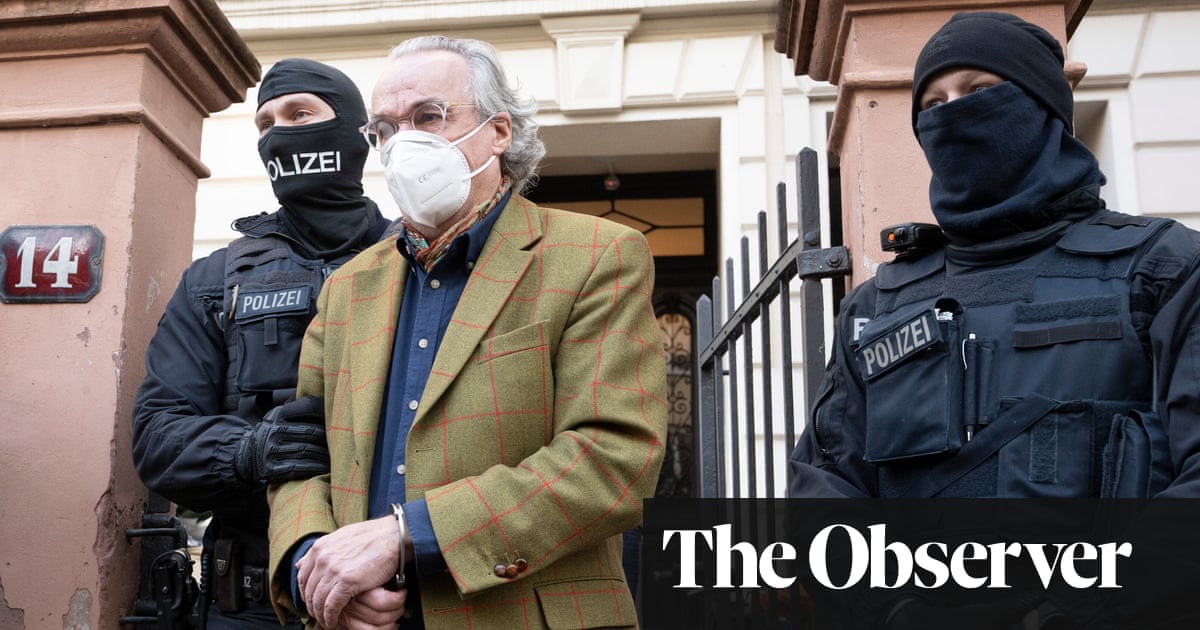
The “pork pie putsch”, named in reference to Alicia Kearns, the Melton Mowbray MP allegedly seeking to topple Boris Johnson, is part of a long tradition of British political conspiracy.
It is the lot of a modern British prime minister not just to govern, but to survive relentless internal intrigue, some hatched in Midlands curry houses, some in Commons tearooms, and some in country houses or on the boundaries of a Test match at Lord’s.
Some plots come into the open at the moment the conspirators planned, others are unmasked prematurely by party whips delighted that early exposure will prove fatal.
Some surprisingly succeed, such as the ousting of Margaret Thatcher, while others, such as the one launched by two former cabinet ministers in 2009 against Gordon Brown, evaporate the day they are launched.
But the extent to which plots can preoccupy Downing Street is hard to exaggerate.
Harold Wilson, often for good reason, was preoccupied by conspiracies to oust him. Lord Marsh, then a court favourite, recalled when he was summoned to the Downing Street flat: “You would sit there for an hour or so and then you would be questioned closely about plots and what Desmond Donnelly or Austen Albu were up to. He distrusted everybody.”
Wilson became so paranoid that he planted stories that Roy Jenkins, Jim Callaghan, and Anthony Crosland had attended a conspiratorial weekend in July 1966 at Ann Fleming’s house in Sevenhampton.
Jenkins had indeed been at the house (“in moments of crisis people are caught in characteristic poses”, as Susan Crosland described it), but no other Labour politician had.
Such was Wilson’s determination to reveal plots that dissident cells were structured in the parliamentary party on the model of a liberation army. An inner group of nine or 10 MPs was charged with forming a constellation of a smaller group. The dissidents’ gathering of intelligence – over secretive drinks – often sounded more efficient than the reality, according to one of them, David Marquand. He recalled: “When the inner group met, we used to say things like, ‘I have spoken to two and don’t know about the rest’, and somebody would write down Bloggs Unknown. It was all quite ridiculous.”
At a May Day rally at the Royal Festival Hall in 1969, Wilson finally confronted the plotters, saying: “I know what is going on.”
His biographer, Ben Pimlott, wrote: “There was audible intake of breath as the audience feared some paranoid rambling,” but instead Wilson said to laughter: “I am going on. Your government is going on.”
He told the plotters and defeatists to “climb into bed and pull the blankets over their heads and not hinder the rest of us”.
The prize for most ineffective plot was one mounted by Margaret Hodge and Geoff Hoon to oust Gordon Brown, known as the “great goose plot” owing to it being hatched in Hodge’s Suffolk country house over roast goose.
Others dubbed it the “pashmina plot” owing to its middle-class origins. It lasted a few hours and had all the momentum of a clamped car.
Hoon, defence secretary during the Iraq war, had been planning to oust Brown since November 2009, some say because Brown had not offered him a plum job as a European commissioner.
Only six months earlier, in 2009, James Purnell, the work and pensions secretary, had walked out of cabinet hoping to trigger a revolt, including by his friend David Miliband.
The Hoon plot, also discussed with Patricia Hewitt at Gandhi’s, an Indian restaurant in London, got off to a shaky start when Hoon’s office mistakenly sent a mysterious blank email to Labour MPs at 10.59am.
An apology followed and the real coup email was issued at 12.26pm – just as prime minister’s questions ended, a poor moment since Brown had put on a particularly effective performance.
They called for the leadership issue to be resolved “once and for all”. Promised heavyweight cabinet support, only silence and then derision followed. Hoon, asked on Newsnight that night whether if he had been Brutus, Caesar would have survived, said: “I am afraid he would.” The hoped for “Et tu, Harriet?” never came.
Another ill-executed plot was against Tony Blair, by Tom Watson, a defence minister and one of Brown’s acolytes. It emerged that the day before Watson delivered a letter calling for Blair to resign he had been in Brown’s house in Scotland.
Watson claimed he had been staying at a luxury golf resort in St Andrews and, being in the area, popped into the chancellor’s house to deliver (and watch) some Postman Pat videos with Brown’s young son.
Watson’s explanation became even less sustainable when it emerged he had been in a curry house in Wolverhampton with a group of ringleaders the night before the journey to Scotland.
The “balti house” or “curry house conspiracy” was revealed when the Mail on Sunday discovered the MPs had signed the owner’s visitors’ book – leaving glowing reviews and incontrovertible evidence they had dined together.
Until more recent times, the Conservative party tried to behead its leaders with dignity. Harold Macmillan was “persuaded to retire” by the legendary men in grey suits after he suffered a curable prostate problem.
He complained of 20 malcontents. “Some few will be content with the success they have had in the assassination of their leader and will not care very much who the successor is.”
But by the end of his prime ministership, he cut a lonely figure, reportedly taking refuge in West End clubs to an almost pathological extent: Pratt’s, Athenaeum, Buck’s, Guards, the Beefsteak, the Turf, the Carlton.
A member of Pratt’s calling in one evening in the 1960s inquired if anyone was there that night. “Nobody at all, sir, only the prime minister.”
John Major in 1995 was blessed by his challenger being John Redwood, who gathered the courage to take up Major’s back-me or sack-me challenge in a conversation at Lord’s cricket ground.
The European Research Group that prematurely tried to oust Theresa May in a 2019 vote of no confidence largely operated in the open in a madhouse parliament.
Some cabinet ministers were more discreet, operating as the “pizza plot”, a group of five. Although they never secured their objective, May’s defeat, they did manage to force her to say she would be gone by the next election.












